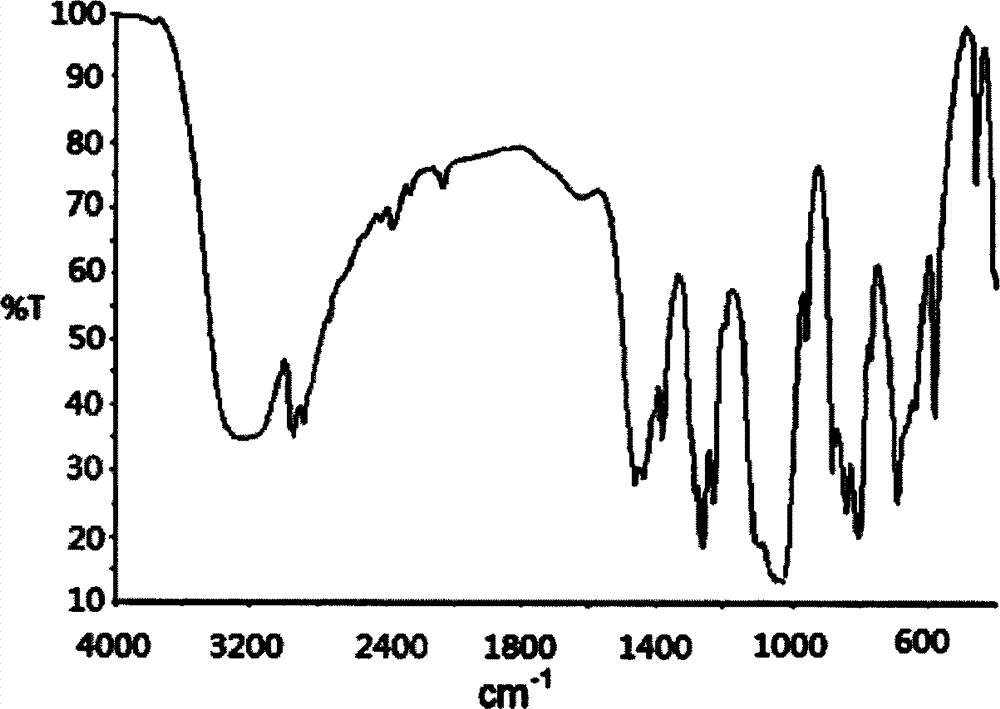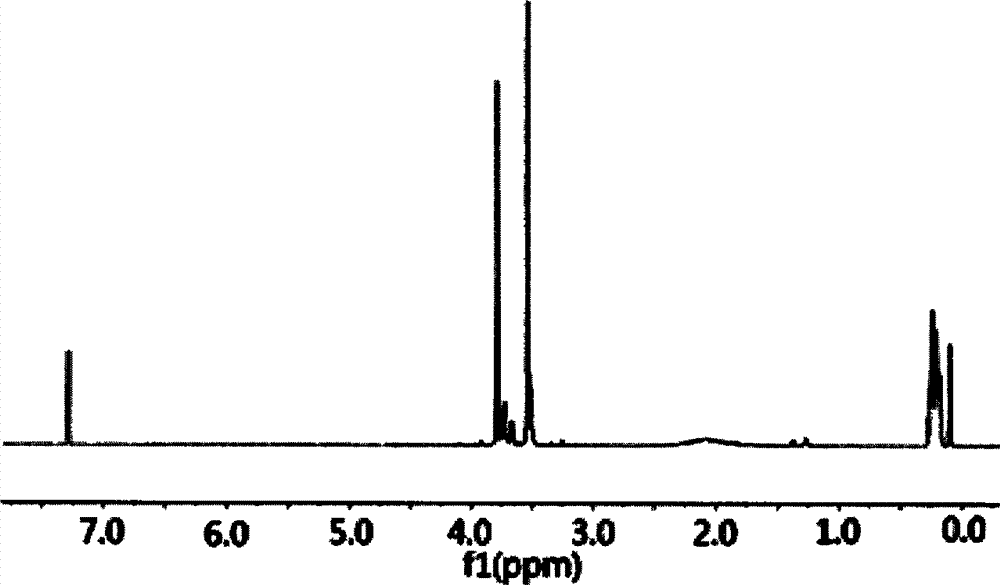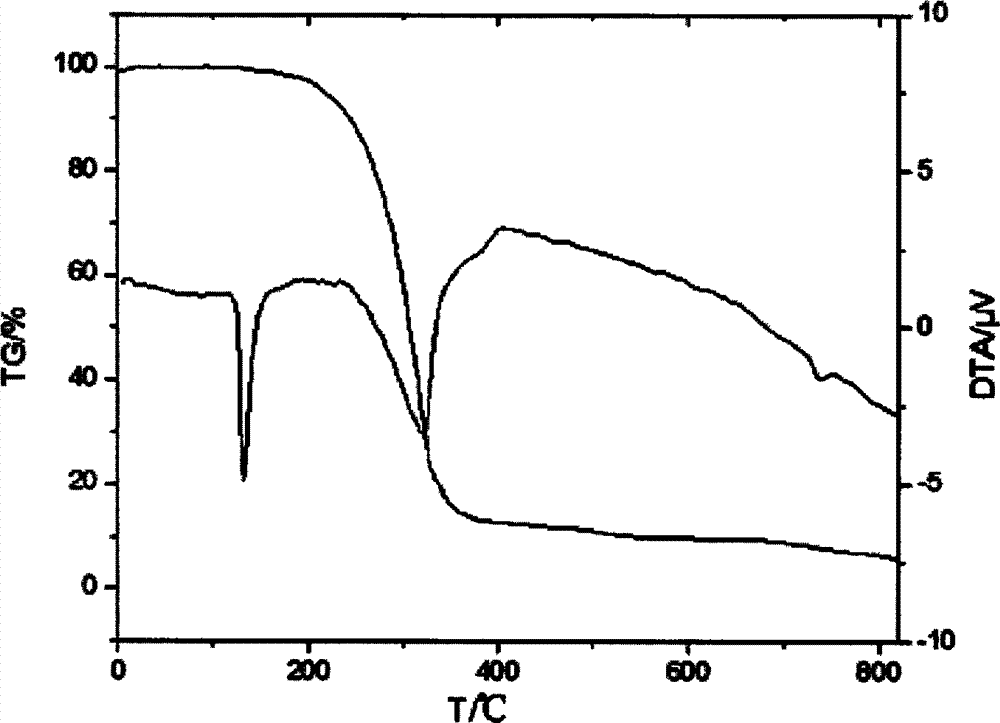Flame retardant dimethyl dibromo neopentyl glycol silicate compound and preparation method thereof
A technology of dibromoneopentyl glycol dimethyl silicate and dibromoneopentyl glycol, which is applied in the field of flame retardant dibromoneopentyl glycol dimethyl silicate, and can solve the problem of halogen-based flame retardancy In order to achieve the effects of high flame retardant efficiency, good processing performance and stable physical and chemical properties of silicon and bromine synergistically
- Summary
- Abstract
- Description
- Claims
- Application Information
AI Technical Summary
Problems solved by technology
Method used
Image
Examples
Embodiment 1
[0030] Embodiment 1 Add 30ml ethylene glycol dimethyl ether and 13.1g (0.05mol ) dibromoneopentyl glycol, at 20°C, add 6.45g (0.05mol) of dimethyldichlorosilane dropwise, and control the temperature during the dropwise addition to not exceed 40°C. , add about 0.55g triethylamine acid-binding agent, adjust to pH = 5-6, stir for 1h, suction filter while hot, distill the filtrate to remove solvent and a small amount of low boiling point, add product mass 2 times the volume of water in milliliters , stirred for 30 minutes, filtered with suction, rinsed with water of 0.5 times the volume of the product in milliliters, drained, and the filter cake was dried to obtain a white solid, dibromoneopentyl glycol dimethyl silicate, with a product yield of 95.2 %.
Embodiment 2
[0031] Example 2 Add 40ml of acetonitrile and 13.1g (0.05mol) of dibromoneopentyl to a 100ml four-neck flask equipped with a stirrer, a thermometer, a high-efficiency reflux condenser and a drying tube and a hydrogen chloride absorption device at the upper mouth of the condenser Diol, at 20°C, add 6.45g (0.05mol) dimethyldichlorosilane dropwise, the dropwise addition process controls the temperature not to exceed 40°C, after the drop is over, heat up to 80°C in 1 hour, keep warm for 6 hours, add about 0.45g N,N-Dimethylaniline acid-binding agent, adjusted to pH = 5-6, stirred for 1 hour, suction filtered while hot, the filtrate was distilled to remove solvent and a small amount of low boiling point, and added water in milliliters twice the volume of the product in grams , stirred for 30 minutes, filtered with suction, rinsed with water of 0.5 times the volume of the product in milliliters, drained, and the filter cake was dried to obtain a white solid dibromoneopentyl glycol di...
Embodiment 3
[0032] Example 3 In a 100ml four-necked flask equipped with a stirrer, a thermometer, a high-efficiency reflux condenser and a drying tube and a hydrogen chloride absorption device at the upper mouth of the condenser, add 50ml of dichloroethane and 13.1g (0.05mol) of dichloroethane. Bromoneopentyl glycol, at 20°C, add 6.45g (0.05mol) of dimethyldichlorosilane dropwise, the dropwise addition process controls the temperature not to exceed 40°C, after the drop, heat up to 82°C in 1h, keep the temperature for 6h, add About 0.4g of pyridine acid-binding agent, adjusted to pH=5-6, stirred for 1h, suction filtered while hot, the filtrate was distilled to remove solvent and a small amount of low boiling point substances, added water in milliliters with the mass of the product twice the volume, stirred for 30min, Suction filtration, then rinsing with 0.5 times the volume of the product in milliliters, draining, and drying the filter cake to obtain dibromoneopentyl glycol dimethyl silica...
PUM
 Login to View More
Login to View More Abstract
Description
Claims
Application Information
 Login to View More
Login to View More - R&D
- Intellectual Property
- Life Sciences
- Materials
- Tech Scout
- Unparalleled Data Quality
- Higher Quality Content
- 60% Fewer Hallucinations
Browse by: Latest US Patents, China's latest patents, Technical Efficacy Thesaurus, Application Domain, Technology Topic, Popular Technical Reports.
© 2025 PatSnap. All rights reserved.Legal|Privacy policy|Modern Slavery Act Transparency Statement|Sitemap|About US| Contact US: help@patsnap.com



